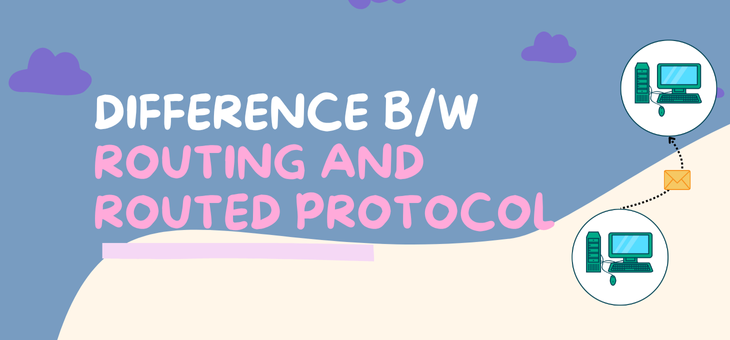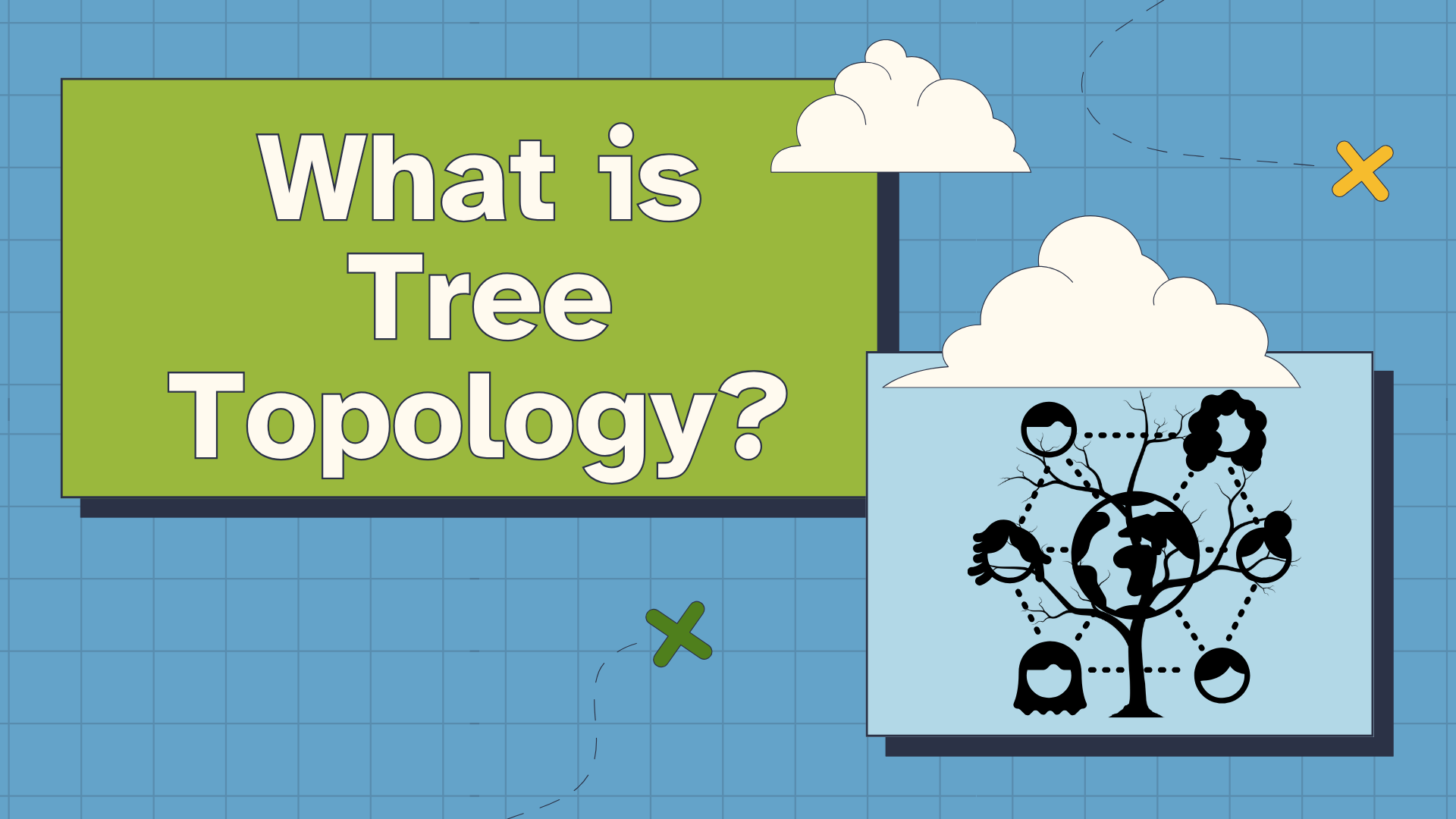
Routing is essential to computer networking because it makes sure data gets from its source to the right place. However, distinguishing between routing protocols and routed protocols is crucial to comprehending routing as its whole.
This article explores what routing and routed protocols are, their features, examples, the difference between routing and routed protocols, and how they collaborate to ensure seamless network communication.
Furthermore, if you are interested in learning more about networking, you can check out our IT infrastructure courses.
What Are Routing Protocols?
Routing protocols are a collection of guidelines that routers use to exchange data in a network. These protocols help routers determine the most effective path to forward packets.
Routing protocols operate at the network layer of the OSI model, communicate, and keep up-to-date routing tables via route update messages.
Even when the network topology changes, routing protocols can dynamically update the routing paths. These protocols are the backbone of routers and guarantee correct packet delivery.

Features of Routing Protocols
Here are some features of the routing protocol:
● It calculates the best route for packet forwarding.
● It continuously exchanges routing information with neighboring routers.
● It can adapt to network topology changes.
● It can be implemented in both small and large networks.
Common Examples of Routing Protocols
The common examples are :
● OSPF (Open Shortest Path First): A link-state protocol using Dijkstra’s algorithm to find the shortest path.
● RIP (Routing Information Protocol): A distance-vector protocol that uses hop count as a routing metric.
● EIGRP (Enhanced Interior Gateway Routing Protocol): A Cisco-proprietary hybrid protocol with fast convergence.
● BGP (Border Gateway Protocol): Used primarily between ISPs and large enterprise networks; the protocol that powers the internet’s routing decisions.
Types of Routing Protocols
These protocols are generally divided into three major categories based on how they operate and share routing information: Distance Vector, Link-State, and Hybrid routing protocols.
1. Distance Vector: Chooses routes based on hop count. Routers share full tables with neighbors. Simple but slow and prone to loops. Examples: RIP, IGRP.
2. Link-State: Routers share link info, not full tables. Each calculates the best paths using Dijkstra’s algorithm. Fast and accurate. Examples: OSPF, IS-IS.
4. Hybrid: Combines both methods for efficiency and fast convergence. Supports advanced features. Examples: EIGRP, BGP.
Advantages
Routing protocols automate route discovery, adapt to network changes, and improve overall network efficiency and reliability.
● Support failover and redundancy for high availability
● Optimize network traffic by selecting efficient paths
● Enhance scalability for growing networks
● Offers more security
Disadvantages
● They can be complex to configure, consume resources, and may cause routing issues if misconfigured.
● Can consume significant bandwidth and CPU resources due to frequent updates
● Complexity in configuration and troubleshooting, especially in large networks
● Potential for routing loops or inconsistencies if misconfigured
● Compatibility issues may arise between different routing protocols or versions
What Are Routed Protocols?
Routed protocols are real network protocols that are used to transport user data over the network, including files, web pages, and emails. They provide logical addressing (like IP addresses) so devices can be identified and data can be delivered end-to-end.
Unlike routing protocols that choose the path, routed protocols use that path to send data.
Features of Routed Protocols
● Routed protocols are capable of handling varying data sizes across diverse networks.
● Uses IP or similar addressing schemes to uniquely identify devices.
● Encapsulates data and sends it across the network.
● Enables communication across different networks.
●Can function across different types of routing protocols.
Common Examples of Routed Protocols
Here are a few well-known routed protocols:
1. IP (Internet Protocol): The most widely used protocol in today’s networks.
2. IPX (Internetwork Packet Exchange): Used primarily in Novell NetWare environments.
3. AppleTalk: Developed by Apple Inc. for Mac OS networking (largely obsolete now).
Advantages
● They operate independently of the underlying physical network infrastructure
● Facilitate seamless communication across multiple networks and protocols
● Support a wide range of applications and services
● Increase reliability with built-in error detection and correction mechanisms
● Allow flexible addressing to accommodate large and diverse networks
Disadvantages
● Security risks if packet integrity and confidentiality are not maintained:
● Depend on routing protocols for path determination, so inefficient routing affects delivery
● Some routed protocols may be legacy and less efficient compared to modern alternatives
● Packet overhead can impact bandwidth utilization
● May require complex addressing schemes in large networks
Key Differences Between Routing and Routed Protocols
The table below compares Routing vs Routed Protocols:
| Aspect | Routing Protocols | Routed Protocols |
| Function | Decide the best path for data to travel | Carry actual user data across networks |
| Role | Part of the control plane | Part of the data plane |
| Data Handled | Manage routing tables and control information | Handle and deliver user data packets |
| Examples | OSPF, RIP, EIGRP, BGP, IS-IS | IP, IPX, AppleTalk |
| Addressing | Use metrics like cost, hop count, and bandwidth | Use logical addresses such as IP addresses |
| Dependency | Work independently and assist with routed protocols | Depend on routing protocols to determine paths |
| Purpose | Help routers dynamically learn and manage routes | Enable devices to communicate across networks |
| Updates | Exchange route updates regularly or as needed | Do not exchange updates; only transmit data |
| Convergence | Affects how quickly a network adapts to topology changes | Not involved in convergence |
| OSI Layer | Operate at the network layer for route computation | Operate at the network layer for data transfer |
How Routing and Routed Protocols Depend on Each Other
Routing and routed protocols work together to enable smooth data transmission across networks. Routing protocols like OSPF or BGP help routers find the best path by sharing route information. Routed protocols like IP then handle the actual delivery of data using logical addresses.
For example, if a user in New York wants to access a website in London, the IP protocol creates a data packet with the server’s IP address. A routing protocol like BGP helps the router choose the best path through the Internet. Once selected, the IP carries the packet step by step until it reaches the London server.
In short, routing protocols choose the path, and routed protocols move the data along it.
Uses of Routing and Routed Protocols
Understanding their key uses helps clarify how networks maintain connectivity and performance. Below is a comparison highlighting their typical applications
Uses of Routing Protocols
1. Companies use protocols like OSPF to manage internal routing across departments and branches.
2. ISPs use BGP to exchange routing information between different networks and ensure global internet connectivity.
3. Universities use OSPF or RIP to connect multiple buildings and manage traffic flow.
4. Use dynamic routing for mobile and secure communication in changing environments.
Uses of Routed Protocols
1. Protocols like IPv4/IPv6 deliver web pages from servers to your device.
2. Routed protocols help transfer emails across networks using IP addressing.
3. Multiplayer games rely on routed protocols to exchange real-time data between players.
4. Data stored in the cloud is accessed and transferred using routed protocols like IP.
Conclusion
Understanding the distinction between routing and routed protocols is fundamental for anyone involved in computer networking. Routing protocols handle the logic and intelligence required to discover paths, while routed protocols are responsible for the actual transportation of data packets.
Together, they form the backbone of modern networking, ensuring that data not only finds a path but also reaches its destination accurately and efficiently.
Whether configuring a simple home router or architecting a global enterprise network, mastering these protocols will lead to better performance, reliability, and control over network communication.
Gautam Kumar is a senior network engineer having more than 7 years of experience in different companies in India. His work experience in network support and operation and maintaining of any network makes him one of the most valuable IT professional in industry. He has been involving in planning, supporting the physical and wireless networks, ...
More... | Author`s Bog | Book a MeetingFAQ
Comments (0)
Popular posts


What are the Different Types of Network ...
10 Dec 2025
CCNA Exam Fees and Expenses Breakdown
25 Aug 2025
New Cisco CCNA Syllabus for 2025
3 Dec 2025
What is a Cloud Service Provider and Top ...
8 Dec 2025Recent posts

What is a Hub in Computer Networks and ...
15 Dec 2025
What is Tree Topology in Networking?
15 Dec 2025
What is the Difference Between IPv4 and ...
15 Dec 2025
What is Application Security in ...
15 Dec 2025
What's the Difference Between TCP and ...
13 Dec 2025Upcoming batches
Contact learning advisor










